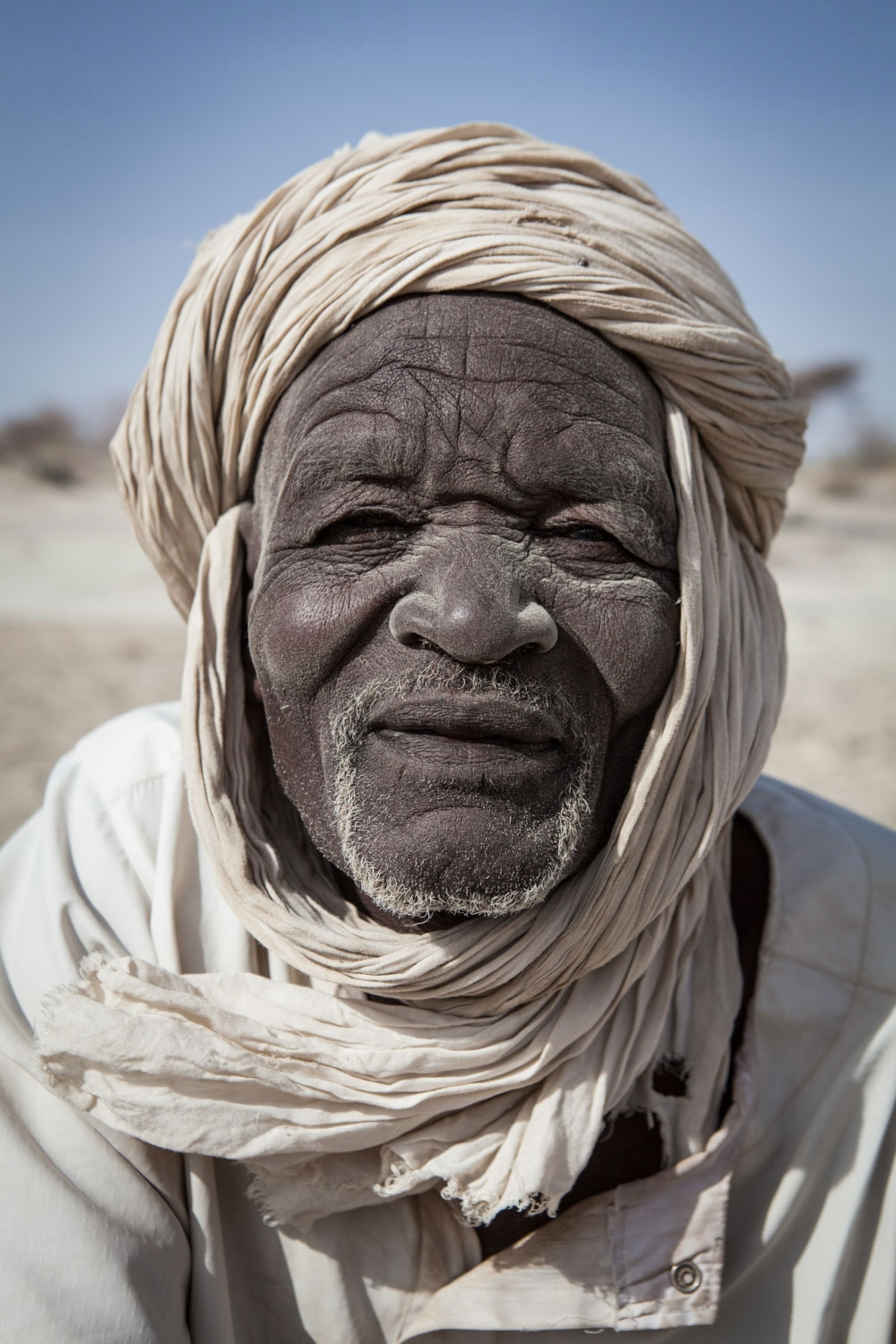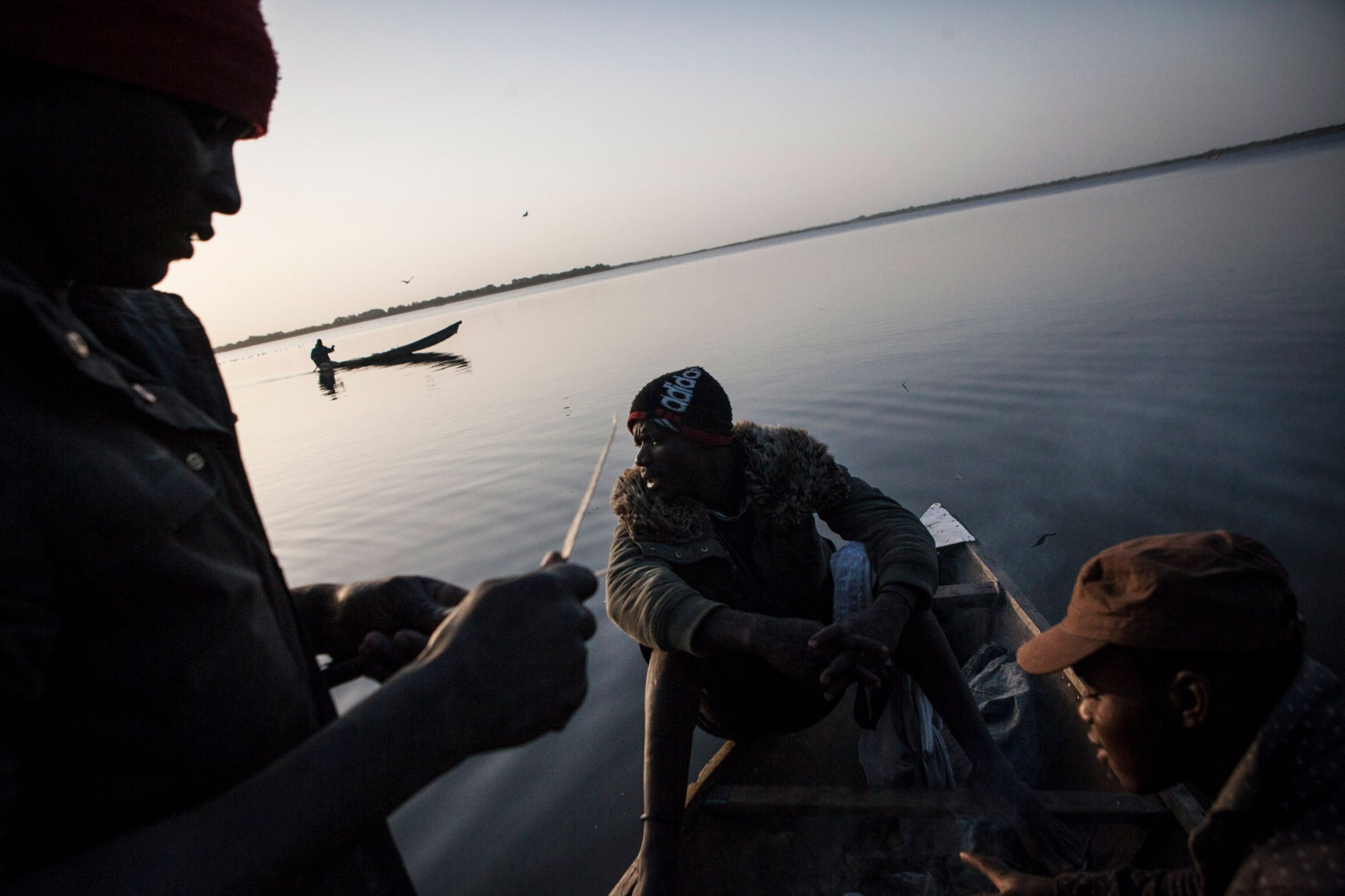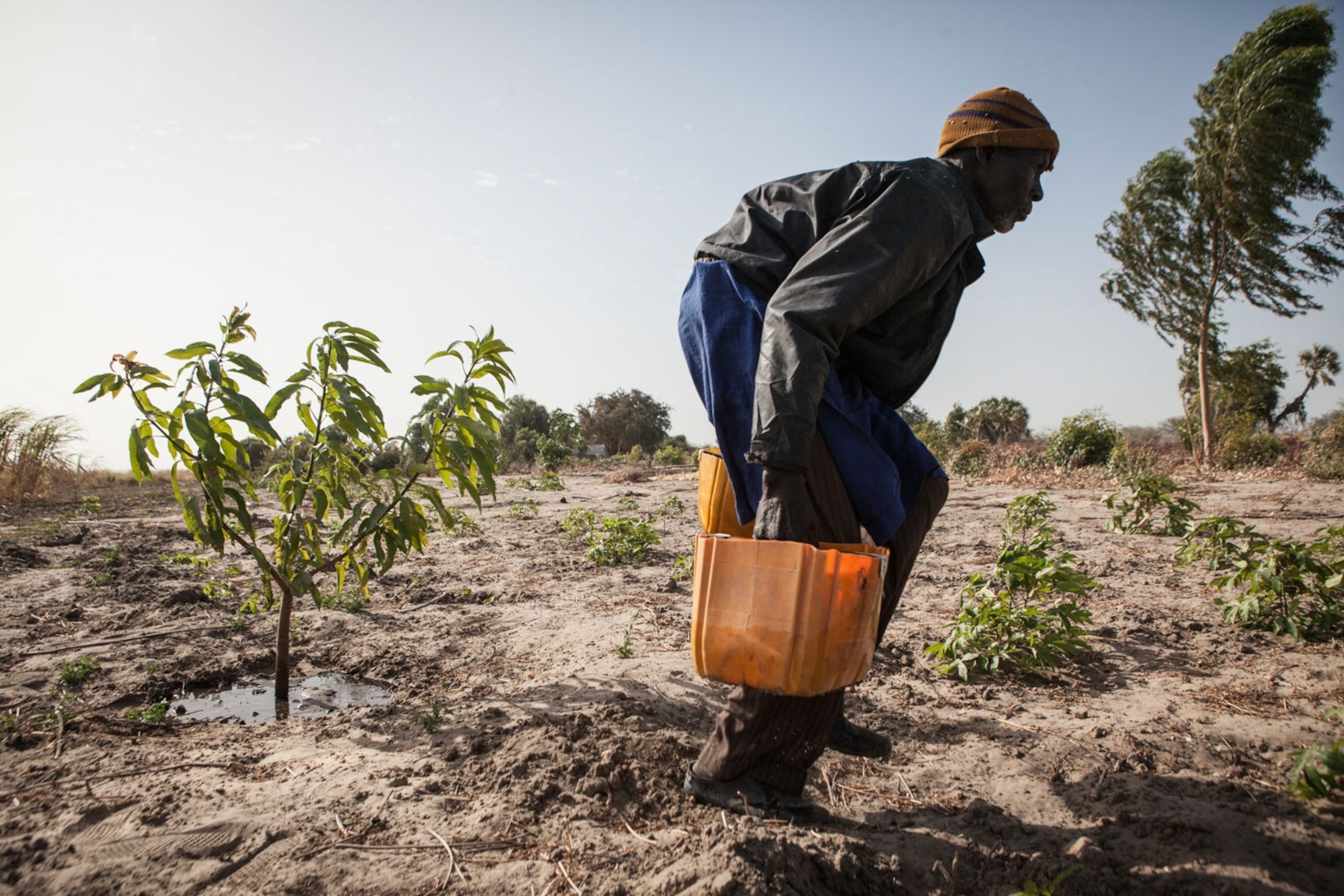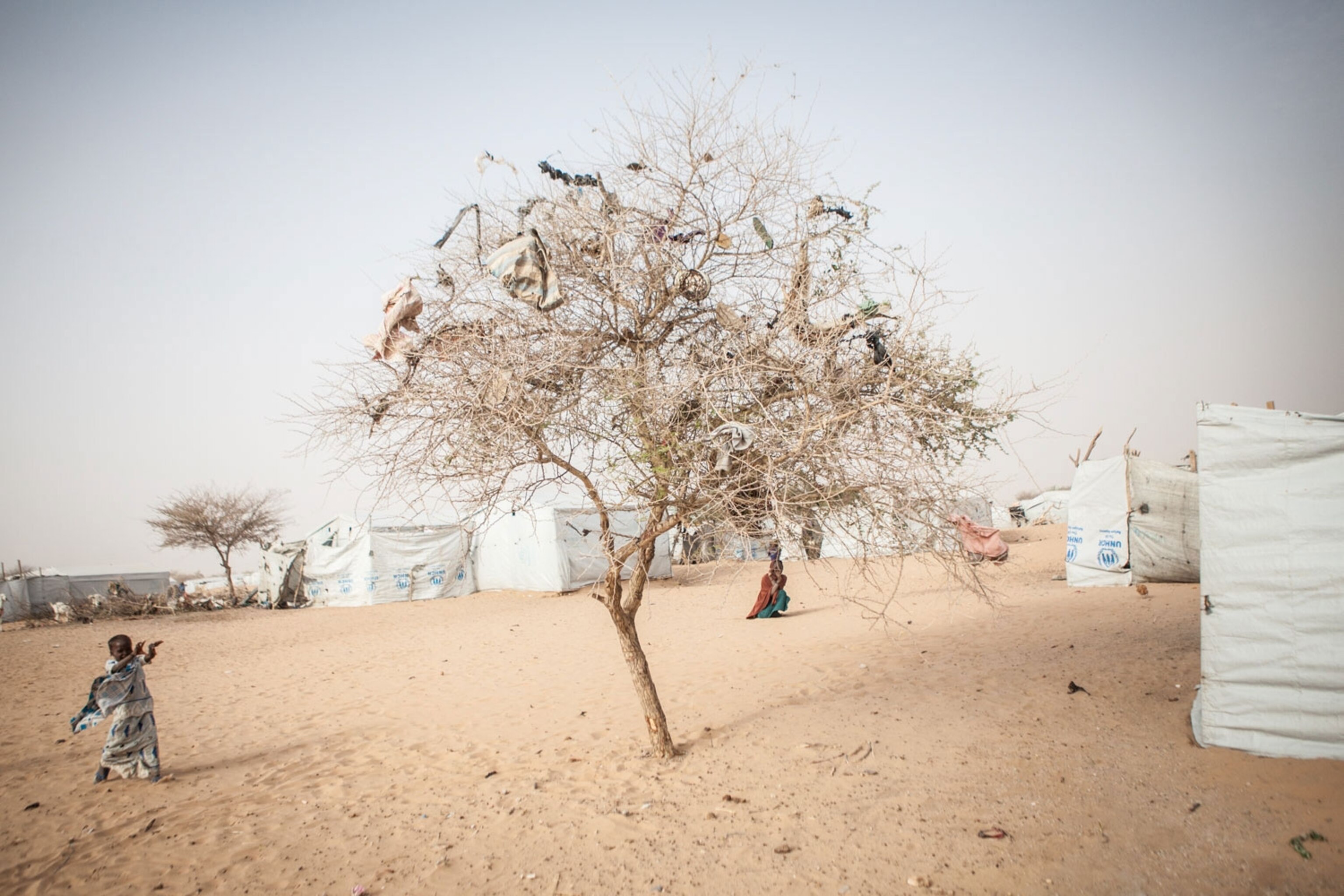
An Uncertain Future on the Shores of Africa's Vanishing Lake
Lake Chad is a vital source of food, water, and income for increasing numbers of displaced people—and it's slowly turning to sand.
Korean-American photographer Jane Hahn has been based on the African continent for over ten years. She’s covered health crises, political violence and other humanitarian issues, and along the way, has run into a lot of troubling sights. One of the most disturbing experiences, Hahn recalls, was standing on a sand dune and realizing that 30 years ago the desert stretching far beyond her vision was covered in water.
In Chad, a landlocked country in north-central Africa, the widening Sahara desert, plus the Boko Haram crisis, has equaled a major threat to the ecosystem of the Chad River Basin. Lake Chad, located at the heart of the fragile basin, is a shallow freshwater lake that currently offers most of its shores to Chad and Cameroon, but historically shares them with Nigeria and Niger.
In February, Hahn spent a week traveling –– by vehicle, boat, and on foot –– the stretch of Lake Chad that resides within Chad’s borders. There, she documented the relationship between the shrinking body of water and the increasing number of people who rely on it to survive.
Originating in Nigeria, Boko Haram is among the world’s deadliest terrorist groups. In late 2014, says Hahn, their targets began to spread beyond Nigeria’s borders into the Chad River Basin countries. Hundreds of thousands of people from the basin who were living in and near Nigeria fled the violence, eventually finding refuge in Chad’s villages and camps, as well as in Niger and Cameroon. In Chad, the influx of displaced Chadians and refugees, on top of the local population, who are now depending on Lake Chad for subsistence, have strained the lake’s resources. Combined with the advancing desert, the future of the lake is more uncertain than ever.












The locals Hahn interviewed, many of whose families have been in the region for several generations, described seeing more and more sand every year; whole villages have moved, following the line of the lake. “Desertification is the one thing that really scares the people I spoke to, the people who are experiencing it first hand,” says Hahn.
It’s known that the surface area of Lake Chad fluctuates seasonally and its mass has varied greatly over the centuries. Yet Hahn reports that “drought, desertification, deforestation, and resource mismanagement in addition to climate change have contributed to its drastic reduction in size by almost 90 percent in the last 60 years.” She believes that with water levels at their lowest, combined with a larger-than-ever population pulling from the ground water for personal use or for irrigation projects, the lake is not able to replenish itself. “When you add on the advancing desert, the basin is dying,” says Hahn. The fish become smaller and decline in number. As more people wash themselves and their belongings in the lake, the water becomes a health hazard to those who drink directly from it, creating illness and exacerbating malnutrition.
The receding waters, and Boko Haram, also sever an economic lifeline between Chad and Nigeria. Maiduguri, Nigeria, the birthplace of Boko Haram, used to be a vital trading post for fishermen, farmers, and traders who crossed the border from Chad to carry produce to the market in Maiduguri. With lower water levels and routes cut off due to insecurity caused by Boko Haram, boats are unable to reach Maidugur, "leaving thousands without their major market to trade with," says Hahn.
The lake’s disappearance has brought one gift, the mineral deposit of natron that is left behind as the water evaporates. Collecting and trading this mineral provided income for its miners –– until their trade routes became impassable.
In spite of the catastrophe looming, the landscape of Lake Chad is remarkably stunning, says Hahn. As the sun rises on the fertile land surrounding the water, women waiting for the fisherman to arrive with the day’s catch shield themselves from the cool air by lighting small fires. The birds accompany the boats to land and circle overhead as the fish are prepared for their final destination; some will be cleaned and carried to the local market, others dried and sent to N’djamena, Chad’s capital. With the smell of the catch still in the air, the women turn their backs to the lake and begin walking inland. Within only a few hundred feet the lush plants give way to sand. Suddenly and dramatically, the women are encircled by the Sahel, the zone of transition before the Sahara desert begins, the sand rising to their ankles.
The winds are only growing stronger, literally carrying the Sahara with them to the lake, says Hahn.
Hahn’s work has been supported by the Open Society Initiative for West Africa (OSIWA).
Related Topics
You May Also Like
Go Further
Animals
- Orangutan seen using plants to heal wound for first timeOrangutan seen using plants to heal wound for first time
- What La Palma's 'lava tubes' tell us about life on other planetsWhat La Palma's 'lava tubes' tell us about life on other planets
- This fungus turns cicadas into zombies who procreate—then dieThis fungus turns cicadas into zombies who procreate—then die
- How can we protect grizzlies from their biggest threat—trains?How can we protect grizzlies from their biggest threat—trains?
- This ‘saber-toothed’ salmon wasn’t quite what we thoughtThis ‘saber-toothed’ salmon wasn’t quite what we thought
Environment
- What La Palma's 'lava tubes' tell us about life on other planetsWhat La Palma's 'lava tubes' tell us about life on other planets
- How fungi form ‘fairy rings’ and inspire superstitionsHow fungi form ‘fairy rings’ and inspire superstitions
- Your favorite foods may not taste the same in the future. Here's why.Your favorite foods may not taste the same in the future. Here's why.
- Are the Great Lakes the key to solving America’s emissions conundrum?Are the Great Lakes the key to solving America’s emissions conundrum?
- The world’s historic sites face climate change. Can Petra lead the way?The world’s historic sites face climate change. Can Petra lead the way?
History & Culture
- Meet the ruthless king who unified the Kingdom of Hawai'iMeet the ruthless king who unified the Kingdom of Hawai'i
- Hawaii's Lei Day is about so much more than flowersHawaii's Lei Day is about so much more than flowers
- When treasure hunters find artifacts, who gets to keep them?When treasure hunters find artifacts, who gets to keep them?
Science
- Why ovaries are so crucial to women’s health and longevityWhy ovaries are so crucial to women’s health and longevity
- Orangutan seen using plants to heal wound for first timeOrangutan seen using plants to heal wound for first time
- Should you be concerned about bird flu in your milk?Should you be concerned about bird flu in your milk?
Travel
- On this Croatian peninsula, traditions are securing locals' futuresOn this Croatian peninsula, traditions are securing locals' futures
- Are Italy's 'problem bears' a danger to travellers?Are Italy's 'problem bears' a danger to travellers?
- How to navigate Nantes’ arts and culture scene
- Paid Content
How to navigate Nantes’ arts and culture scene




